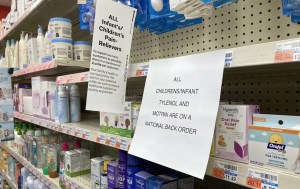By Philtrina Farquharson | Contributing Writer
Listos California, a disaster preparedness organization and Cal OES (California Governor’s Office of Emergency Services hosted a briefing this past week to share recovery efforts and resources for those impacted by recent floods.
The impact of these storms has caused damage to homes, roads, and infrastructure and as a result, the issue of severe rainstorms has become a growing concern for many. “In addition to floods and fires, complex disasters will be ongoing as a result of climate change”, says Diana Crofts-Pelayo, Assistant Director, Crisis Communication & Public Affairs, Cal OES.
It is important for residents all throughout California to stay prepared and better understand the range of recovery resources available and how to access them online, by phone or in-person.
Listos California Resources
People can go to listoscalifornia.org for preparedness tips and keep in these five simple steps to be disaster ready:
- Get alerts to know what to do
- Make a plan to protect your people
- Pack a go bag with things you need
- Build a stay box for when you can’t leave
- Help friends and neighbors get ready
Those are five simple steps that can be used in any emergency or disaster and it’s good to be prepared. “Let this be a reminder for you to have those conversations with your family and really make the difference for the next time an emergency strikes, so that families are ready,” says Diana Crofts-Pelayo.
Dayana Contreras, Listos California Program Manager, Catholic Charities of the Diocese of Fresno says, “from the first day of the floods, we provided food to the migrant camps and had a pop-up disaster relief center.” “Pillows, blankets, water, and other supplies were also provided. “We are going to help people create a long-term recovery plan,” says Contreras.
FEMA Resources
Under housing assistance, eligible survivors may be eligible for rental assistance; temporary lodging; repair assistance; or replacement assistance. Under other needs assistance, personal property damage can be replaced; transportation repairs; can be assisted with funeral costs; medical and dental costs; childcare and other miscellaneous costs; the current maximum for each category of assistance this fiscal year is up to $41,000 per household, and this is expense or losses not covered by insurance.
For the process of registering for FEMA, an applicant can call 1-800-621-FEMA (3362). Those impacted can also go in person to a state local assistance center or a joint disaster recovery center. There’s staff, not only from FEMA, but also mitigation that can assist with a survivor’s recovery efforts.
In order to be eligible for FEMA aid, a survivor must meet the general conditions of eligibility which includes uh being a U.S. citizen, a non-citizen national, or a qualified alien. They must prove their identity and that they were occupying the primary residence at the time of the disaster, and this is for uninsured or underinsured disaster cause expenses and serious needs as it relates to housing assistance and other needs assistance
SBA (Small Business Administration) Resources
SBA offers federal low interest disaster loan to businesses of all sizes, most private non-profit organizations, homeowners, and renters. Business of any size may borrow up to $2 Million for the specific purpose to repair or replace the disaster property damage through a Physical Disaster Loan. The interest rate can be as low as 3.305%.
“Our job is to try and truly measure the impacts from disasters because all disasters are different, and to try and bring together whatever support we can that will help local communities respond to those disasters,” said Robert. Troy, Assistant Director, Interagency Recovery Coordination, Cal OES. “Storm events like this can take months and years to fully repair local infrastructure and local recovery capabilities,” he adds.
“We need to be prepared and vigilant as we see more complex and natural disasters. It’s not if but when, the next disaster will strike.












